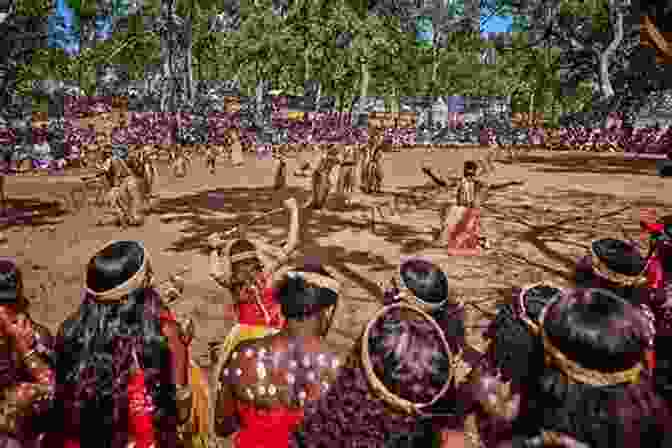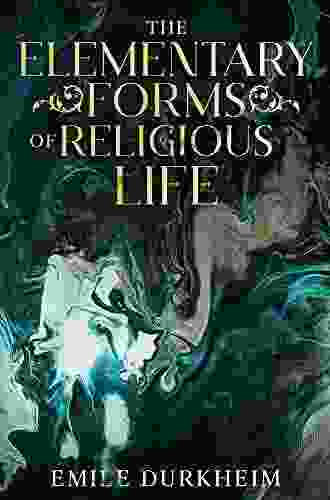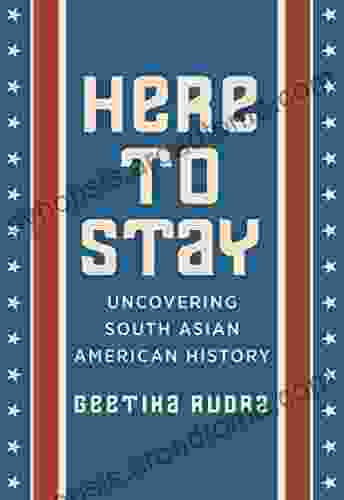The Elementary Forms of Religious Life: Unraveling the Sacred and the Social

4.6 out of 5
| Language | : | English |
| File size | : | 117003 KB |
| Print length | : | 416 pages |
| Lending | : | Enabled |
The Elementary Forms of Religious Life, a masterpiece by the renowned sociologist Émile Durkheim, stands as a towering work that has profoundly shaped our understanding of religion and its role in society. Published in 1912, this seminal text offers a groundbreaking analysis of the origins and fundamental structures of religious beliefs and practices. Durkheim's insights continue to resonate with scholars and laypeople alike, shedding light on the complex relationship between the sacred and the profane, the individual and the collective.
Deconstructing Religion
Durkheim begins his exploration by challenging the prevailing view of religion as a mere projection of individual fears and desires. Instead, he argues that religion is an objective social phenomenon, deeply rooted in the collective experiences and beliefs of a community. To support his theory, Durkheim draws heavily on ethnographic data from aboriginal societies, particularly the totemic practices of Australian tribes.

Through his analysis, Durkheim identifies two fundamental categories that define religious phenomena: the sacred and the profane. The sacred represents the domain of the extraordinary, the mysterious, and the awe-inspiring. It is set apart from the mundane and ordinary, which constitutes the profane.
The Power of the Collective
One of Durkheim's most significant contributions lies in his emphasis on the role of the collective in shaping religious beliefs and practices. He argues that religion is not a private affair but rather a shared social experience. It is through collective rituals and ceremonies that individuals transcend their everyday selves and connect with something greater than themselves.

Durkheim's concept of collective effervescence captures the intense emotional and spiritual experiences that occur during religious gatherings. This heightened state of collective consciousness allows individuals to feel a profound sense of unity and solidarity.
The Origins of Religion
Durkheim locates the origins of religion in the totemic beliefs and practices of primitive societies. He posits that the totem, an animal or plant species that serves as the symbol of a clan, embodies the collective identity and values of the group. Religious rituals surrounding the totem serve to strengthen social bonds and reinforce the collective conscience.

Durkheim's analysis of totemism provides a framework for understanding the emergence of more complex religious systems. He argues that as societies evolve, the totemic symbol evolves into a more abstract and idealized representation of the collective consciousness. This transformation paves the way for the development of monotheistic religions with their emphasis on a single, all-powerful God.
Legacy and Influence
The Elementary Forms of Religious Life has had a profound impact on the study of religion and sociology. Durkheim's groundbreaking insights have challenged traditional assumptions about the nature of religion and its relationship to society. His work has inspired generations of scholars to explore the social, psychological, and anthropological dimensions of religious phenomena.
Durkheim's theory of religion has also been applied in a wide range of fields, including psychology, anthropology, and cultural studies. It has informed research on topics such as the psychology of conversion, the role of religion in social cohesion, and the relationship between religion and political power.
The Elementary Forms of Religious Life remains a seminal work in the field of sociology and the study of religion. Émile Durkheim's innovative analysis of totemism and the role of the collective in shaping religious beliefs and practices has provided a powerful lens through which to understand the intricate relationship between the sacred and the profane. Durkheim's ideas continue to inspire and challenge, making this classic text an enduring masterpiece that continues to shape our understanding of religion and its significance in human life.
4.6 out of 5
| Language | : | English |
| File size | : | 117003 KB |
| Print length | : | 416 pages |
| Lending | : | Enabled |
Do you want to contribute by writing guest posts on this blog?
Please contact us and send us a resume of previous articles that you have written.
 Book
Book Novel
Novel Page
Page Chapter
Chapter Text
Text Story
Story Genre
Genre Reader
Reader Library
Library Paperback
Paperback E-book
E-book Magazine
Magazine Newspaper
Newspaper Paragraph
Paragraph Sentence
Sentence Bookmark
Bookmark Shelf
Shelf Glossary
Glossary Bibliography
Bibliography Foreword
Foreword Preface
Preface Synopsis
Synopsis Annotation
Annotation Footnote
Footnote Manuscript
Manuscript Scroll
Scroll Codex
Codex Tome
Tome Bestseller
Bestseller Classics
Classics Library card
Library card Narrative
Narrative Biography
Biography Autobiography
Autobiography Memoir
Memoir Reference
Reference Encyclopedia
Encyclopedia Sikander Sultan
Sikander Sultan Tabitha Brown
Tabitha Brown Deborah Lock
Deborah Lock John Montroll
John Montroll Demelza Carlton
Demelza Carlton Rick Smith
Rick Smith Liz Palika
Liz Palika Mr Steve Adzima
Mr Steve Adzima David Toht
David Toht Den Lennie
Den Lennie Jayne L Rygh
Jayne L Rygh Richard N Arteca
Richard N Arteca Steve Vogel
Steve Vogel Sarah Shrimpton
Sarah Shrimpton Michael Hsu
Michael Hsu Richard Bass
Richard Bass Mark Benson
Mark Benson David Goggins
David Goggins Derek J Canyon
Derek J Canyon Greg Milner
Greg Milner
Light bulbAdvertise smarter! Our strategic ad space ensures maximum exposure. Reserve your spot today!

 Hayden MitchellThe Kundalini Yoga Meditation Handbook For Mental Health: A Comprehensive...
Hayden MitchellThe Kundalini Yoga Meditation Handbook For Mental Health: A Comprehensive... Samuel WardFollow ·9.9k
Samuel WardFollow ·9.9k Jayden CoxFollow ·15.6k
Jayden CoxFollow ·15.6k Dylan HayesFollow ·3.6k
Dylan HayesFollow ·3.6k Gabriel MistralFollow ·9.1k
Gabriel MistralFollow ·9.1k Leo TolstoyFollow ·12.5k
Leo TolstoyFollow ·12.5k Tom ClancyFollow ·19.7k
Tom ClancyFollow ·19.7k David PetersonFollow ·6.1k
David PetersonFollow ·6.1k Aaron BrooksFollow ·7.7k
Aaron BrooksFollow ·7.7k

 Isaac Bell
Isaac BellUnveiling the Enchanting World of Customs and Crafts:...
Embark on a captivating journey through the...

 Allen Parker
Allen ParkerHow to Write a Nonfiction Memoir: The Bookcraft Guide
Have you ever wanted...

 Nathaniel Powell
Nathaniel PowellCelebrate Spring's Arrival with Traditions from Around...
Immerse Yourself in the Vibrant Cultures of...

 Hunter Mitchell
Hunter MitchellThe Skeletal Muscles of the Human Body: An In-Depth Guide
The skeletal muscles of the human body are...

 Justin Bell
Justin BellFirst Aid for the NBDE: Your Essential Guide to Exam...
Master the NBDE...
4.6 out of 5
| Language | : | English |
| File size | : | 117003 KB |
| Print length | : | 416 pages |
| Lending | : | Enabled |












